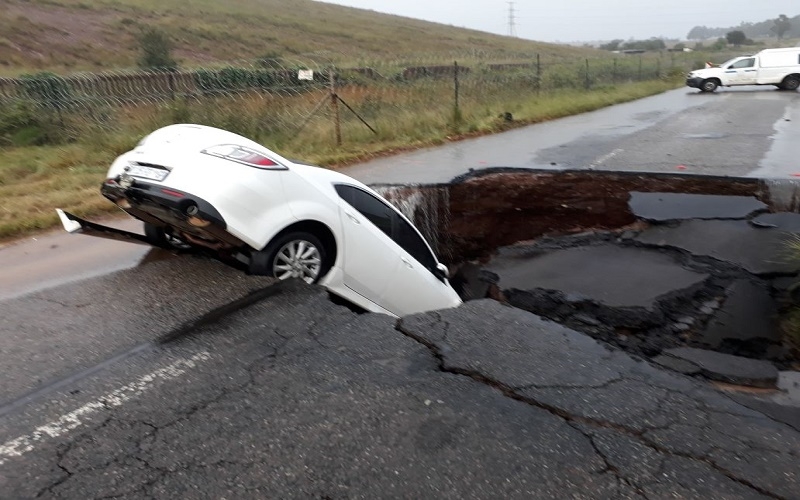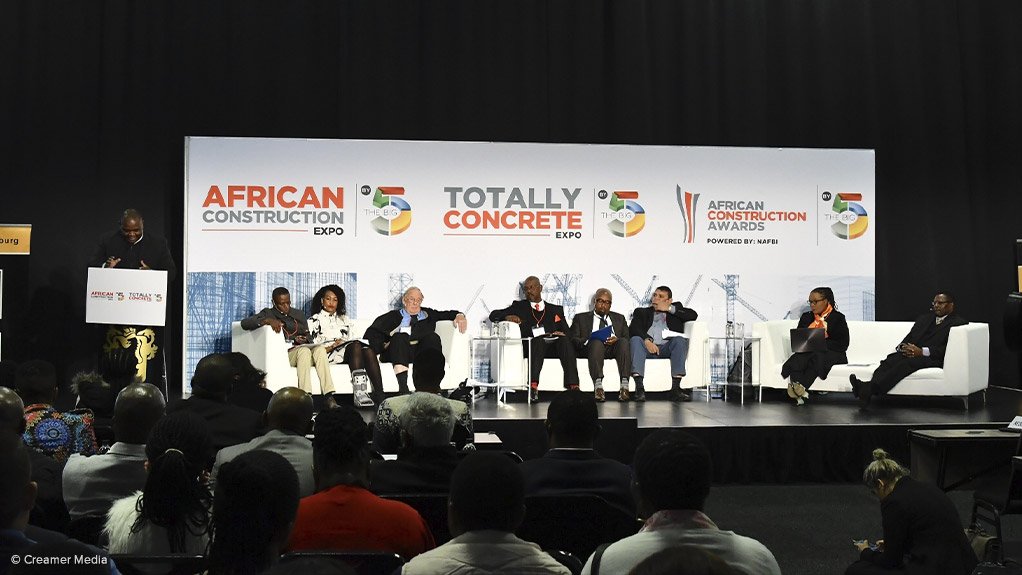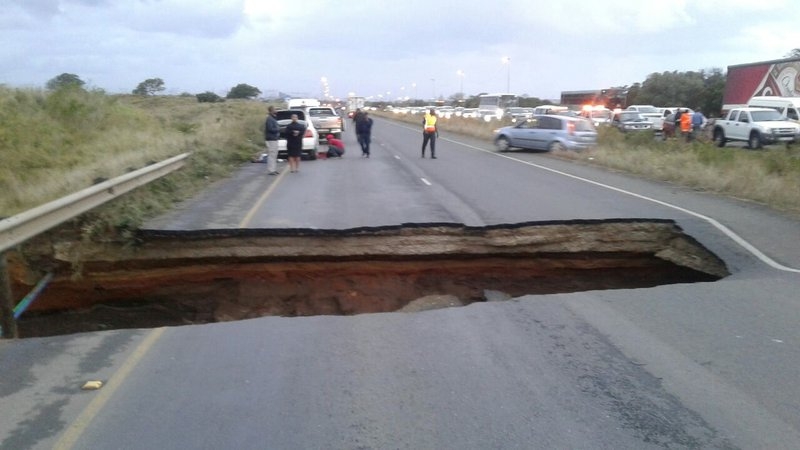

The presence of dolomite, most likely activated by heavy rains, has caused recent sinkholes in Gauteng – and could trigger more, the provincial and local government authorities warned on Monday.
“In Gauteng, 25% of the land is dolomitic and in that case we have to be very, very careful,” said Premier David Makhura, while visiting the site of a sinkhole covering both lanes of the R55 in Laudium. “In the coming weeks, we are likely to have more heavy rains, so the possibility of more sinkholes developing is a high probability,” added TshwaneRoads and Transport MMC, Councillor Sheila Lynn Senkubuge.
Tshwane Mayor Solly Msimanga said there were currently eight sinkholes in Laudium and three “major ones developing” in Valhalla. “Centurion is very hard hit,” he said.
Along with Roads and Transport MEC, Ismail Vadi, the officials spoke to the media at a gathering broadcast by eNCA. Makhuru warned that the R55’s sinkhole would collapse further and this process had to be allowed to take place before it could be fixed effectively.
Vardi said the R55’s sinkhole, which collapsed on Saturday evening, had been measured as 30 metres deep, 35 metres long and 25 metres wide. He said that a geological survey indicated that there was potentially another emerging sinkhole further down the road. The area was being carefully monitored.
In the interim, he warned members of the public to stay clear of the sinkhole and its immediate surroundings. He said residents of the houses in the area might need to evacuate, although “at this stage, it looks okay”.
According to guidelines published by the national Department of Water Affairs in 2009, dolomite is a rock made of calcium/magnesium carbonate which can dissolve in the presence of water when combined with carbon dioxide. While this can be a natural process that takes place over millions of years, at times, openings form underground and eventually can lead to sinkholes.
A sinkhole in Jean Avenue in Centurion was being repaired at the cost of R45-million, while three in Laudium were being repaired at a cost of R30-million, R18-million and R8-million Smaller ones, however, could be treated at a cost of approximately R1-million. Msimanga said water leakages could also be a cause of the dolomite shifts and various piperepairs were being carried out. Makhura added that mining activities, especially on the West Rand, also contributed to the instability of the land.
“We are a province that is sitting on a very delicate land and our planners are perfecting how we survive as a human species,” he explained.





